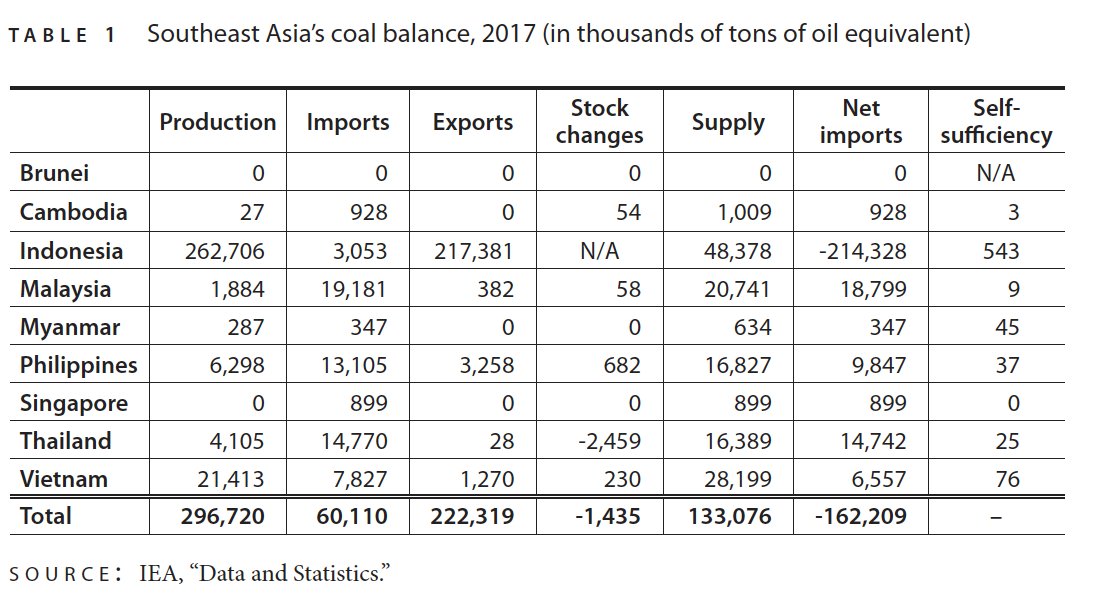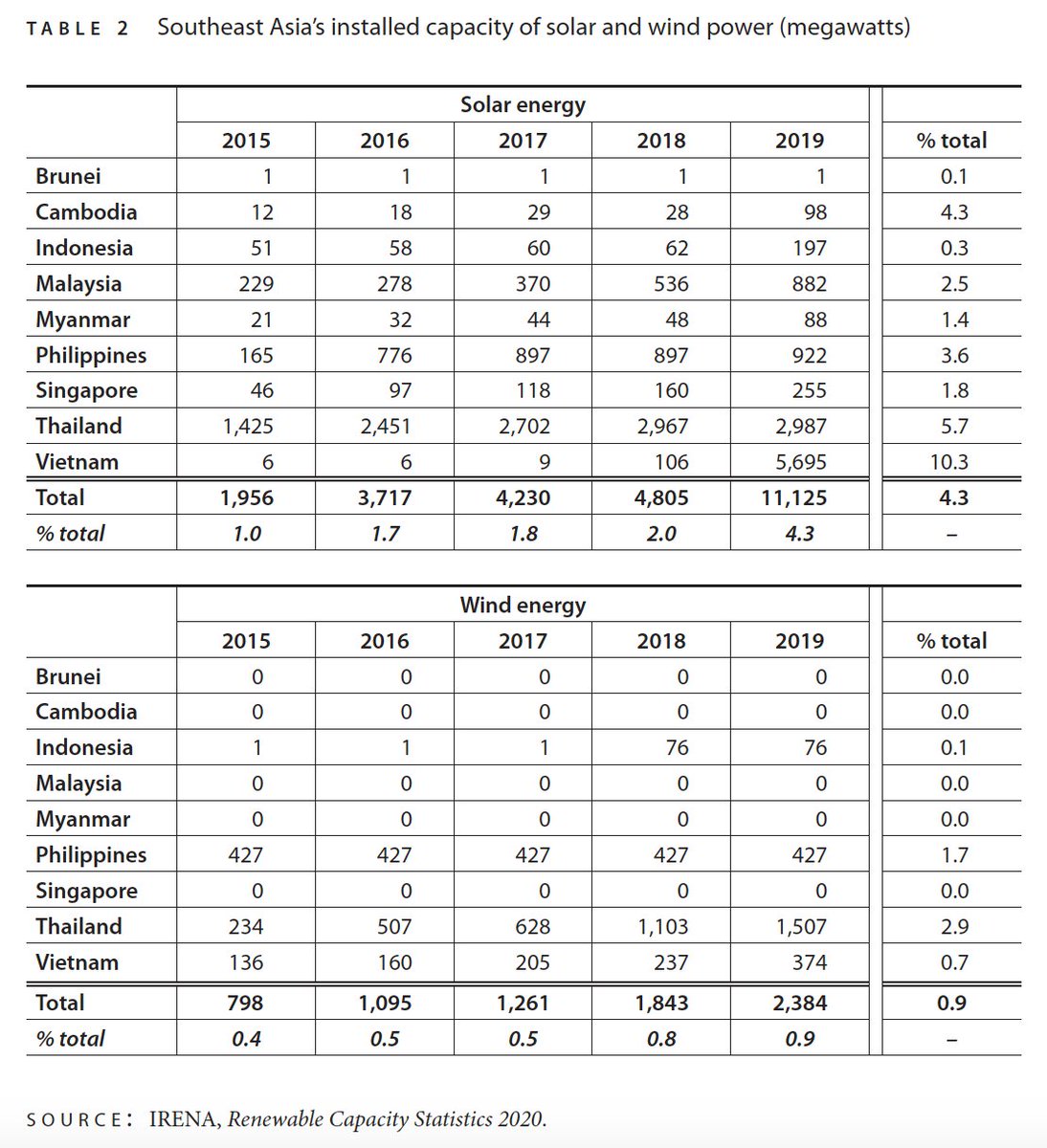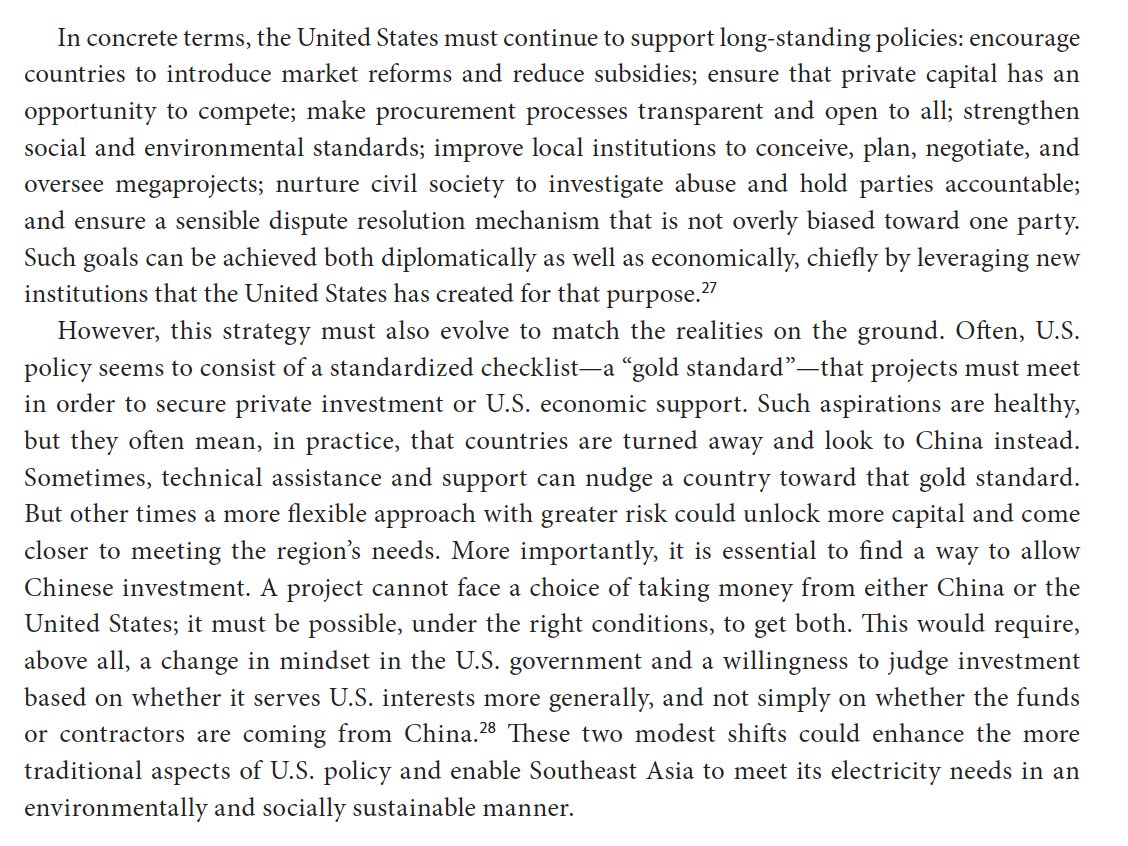How SE Asia meets its electricity needs is one the most consequential issues of our time–for energy markets, climate change, and geopolitics. Very happy to see this paper I wrote for @NBRnews released today. Brief thread with my observations and argument.
https://www.nbr.org/publication/powering-southeast-asia-meeting-the-regions-electricity-needs/
https://www.nbr.org/publication/powering-southeast-asia-meeting-the-regions-electricity-needs/
First, some obvious points: There are 650 million people in SE Asia, and per capita energy use is far lower than the global average. The region needs more energy and more electricity. No credible strategy can ignore this urgent need.
Second, the region is diverse. It’s hard to lump together Singapore, Myanmar, Brunei and Indonesia, and talk about the “region” as one thing. It’s important to highlight regional trends but also differences—in electricity consumption, fuel choices, strategic direction, etc.
But one regional dynamic is clear: more coal. The shift to coal started at different times in different countries, and for different reasons. But in most places, coal has gained market share over the past two decades.
One reason is that domestic gas resources became scarcer. Some countries supplemented domestic gas production with imports. Others looked at coal. Often, counties found coal easier. And coal won.
Coal didn’t win because it was abundant domestically, by the way. Most countries in the region are net coal importers (that said, some are significant producers too).
Nor was coal always cheap. Sometimes, it became cheap. For example, as Malaysia increased gas prices as a way to remove subsidies gas became more expensive than coal. Coal then boomed— a side-effect of gas price reform.
For most countries, the growth in coal started years ago and continued apace—far predating China’s Belt and Road Initiative. In some places, you might see a more recent jump. But as a regional story, it’s slow and steady growth—with money coming from diverse sources.
The reliance on coal should not mask a more recent shift: to renewables. From 2015 to 2019, solar capacity increased almost sixfold, from under 2 GW to over 11 GW. In wind, capacity grew threefold, from 800 MW in 2015 to 2,384 MW in 2019. Things are changing.

 Read on Twitter
Read on Twitter




